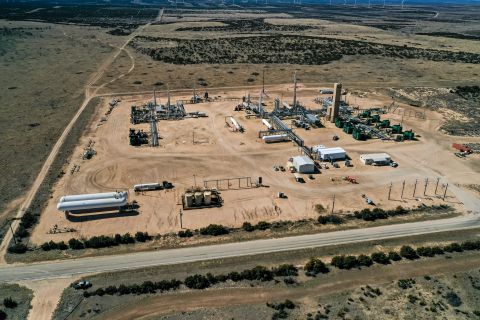
Anchorage officials are weighing a bid on ConocoPhillips Alaska’s interests in the Beluga River Unit (BRU) in the Cook Inlet, but first they will need authority to do so.
After some questioned whether the city should be more involved in the gas business at a hearing on Sept. 29, the city has now pushed back a vote on the matter to October.
Anchorage’s utility company, Municipal Light & Power (ML&P), already owns a one-third interest in the BRU. Mayor Ethan Berkowitz is pushing to bid on all or part of another third of the acreage, about 5,700 acres, that ConocoPhillips is divesting.
Hilcorp Alaska LLC owns the remaining third of the field.
ConocoPhillips said in July it would market the BRU as it moves ahead with other projects in the state, such as the Kenai LNG plant. The company holds 100% interest in the North Cook Inlet Unit and interest in the leasehold lands in and around Cook Inlet.
Initially, the Anchorage assembly planned for a Sept. 15 vote but authorization was delayed for a Sept. 29 public hearing. After the hearing, a resolution authorizing a bid will come before the assembly at a special meeting on Oct. 6.
Bids are due in October with a projected closing in December.
Though thought of as a novelty, public utility companies serve millions of people.
The bulk of electric power generation has largely been in the hands of corporations since the 1930, when 10 holding companies owned 75% of the industry, according to the University of Oregon. In 2003, 40 U.S. states had at least one publicly owned utility, according to the U.S. Energy Information Administration.
In Texas, 72 municipally owned utilities (MOUs) operated in 2012 with some having served communities for half a century, according to the Texas Public Power Association.
MOUs provided power to 4.1 million people or about 15% of Texas’ population, according to the Texas Public Power Association.
In 1996, Anchorage’s ML&P bought into its one-third interest of the Beluga unit for $120 million. It has since saved ratepayers $239 million in electric generation costs, according to Anchorage city documents.
Pat Abney, a former Anchorage assembly member, told the assembly that years ago she was faced with a similar decision regarding the field. Abney said she chose to support the purchase.
“It was one of the best things that we ever did,” Abney said. “We took a risk and the city has been benefitting ever since and is continuing to benefit.”
Tom McGrath, a frequent speaker at assembly meetings, said he recalled the hearings in the 1990s when the first portion of the gas field was purchased.
“It’s been very successful for the city of Anchorage,” he said.
But McGrath said buying a small portion of the field with an outside operator was one matter while buying more might become more onerous if the assembly were dragged into day-to-day operations.
“The last time, this was a long involved process,” McGrath said. “This time it seems like it’s being rushed through. We need to look at this closely and not bite off more than we can chew.”
The Beluga River Gas Field was discovered in 1962 on the upper west side of Cook Inlet, about 35 air miles from Anchorage. ConocoPhillips production serves major customers in south-central Alaska, including local utilities and industrial consumers.
Beluga production is also used as supplemental supply for the Kenai LNG plant. Net natural gas production averaged nearly 19 million cubic feet per day in 2012.
Contact the author, Darren Barbee, at dbarbee@hartenergy.com.
Recommended Reading
Oxy’s Hollub Drills Down on CrownRock Deal, More M&A, Net-zero Oil
2024-11-01 - Vicki Hollub is leading Occidental Petroleum through the M&A wave while pioneering oil and gas in EOR and DAC towards the goal of net-zero oil.
Empire Raises $10M in Equity Offering to Ease Doubts, Reports $3.6M Loss
2024-11-14 - Empire Petroleum received a waiver from its lender after falling out of compliance with a credit agreement.
Oilfield Services Firm Flowco Files IPO Paperwork
2024-12-09 - Oilfield services provider Flowco filed paperwork for an IPO, one of several energy-focused players seeking to test the public markets.
Midstream M&A Adjusts After E&Ps’ Rampant Permian Consolidation
2024-10-18 - Scott Brown, CEO of the Midland Basin’s Canes Midstream, said he believes the Permian Basin still has plenty of runway for growth and development.
CEO: Breakwall Providing Capital as RBLs ‘Materially’ Decrease
2024-10-09 - Breakwall Capital is stepping in to bridge the gap from the historic days of reserve-based lending, Breakwall Managing Partner and co-CEO Jamie Brodsky said at Hart Energy's Energy Capital Conference in Dallas.
Comments
Add new comment
This conversation is moderated according to Hart Energy community rules. Please read the rules before joining the discussion. If you’re experiencing any technical problems, please contact our customer care team.






